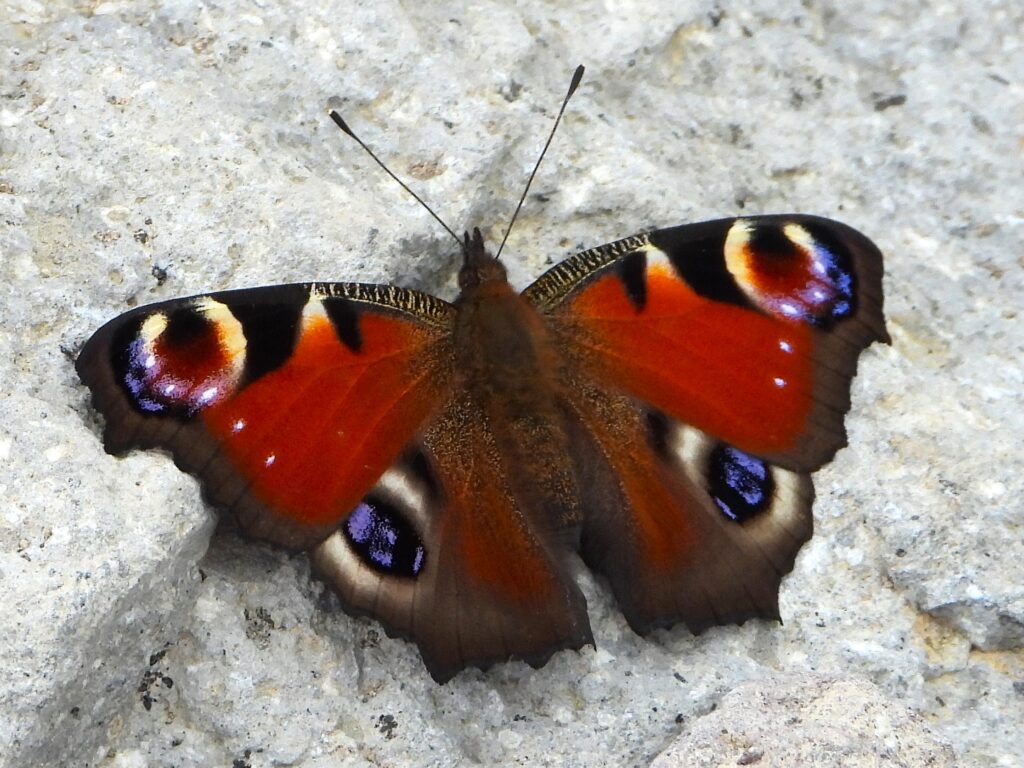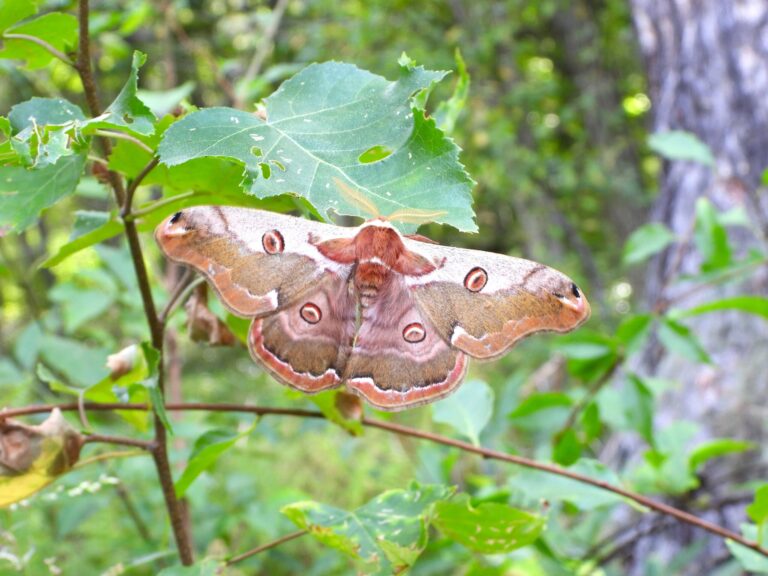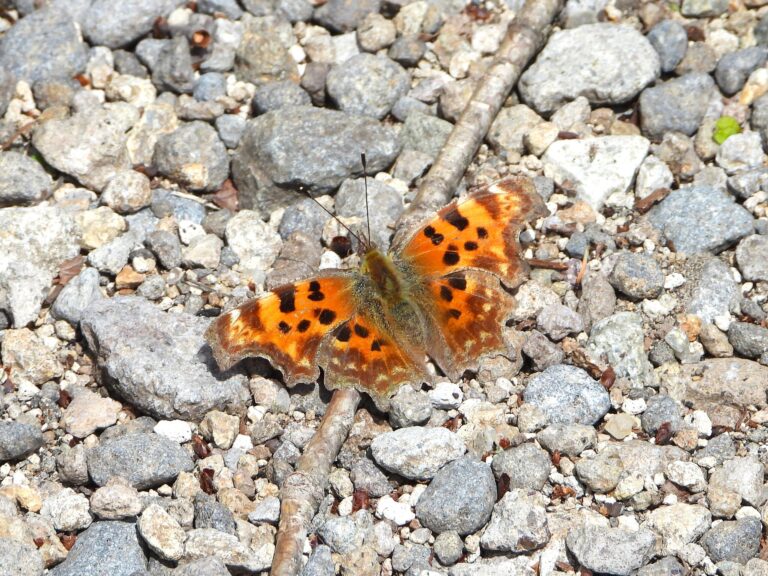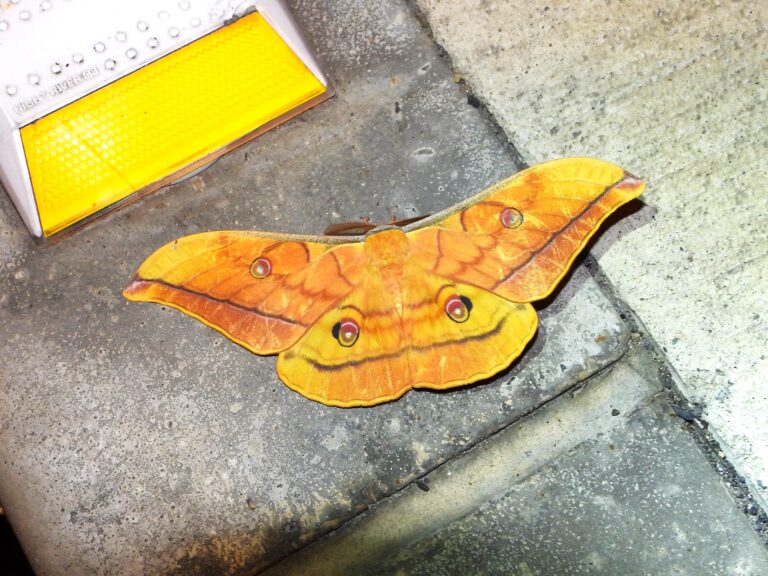Peacock Butterfly (Aglais io) – Wildlife of Japan
Introduction
The Peacock Butterfly (Aglais io) is one of the most striking butterflies of the Palearctic region. Its vivid eyespots resemble the feathers of a peacock, which inspired its name. This species is distributed from Western Europe through northern Asia and reaches Japan at the eastern limit of its range. In Japan, it inhabits cool temperate regions such as Hokkaido, northern Honshu, and mountain areas further south, where it can be seen fluttering around open meadows and forest edges.
Appearance
The Peacock Butterfly has a wingspan of about 50–55 mm. The upper side is reddish-brown with four large eyespots—two on the forewings and two on the hindwings—while the underside is dark brown to black, giving excellent camouflage when the wings are closed. The vivid blue and yellow rings on the upper wings act as a defense mechanism, deterring potential predators. There is little difference in appearance between males and females.
Habitat & Distribution
This butterfly inhabits forest margins, meadows, and grasslands where nettles grow. In Japan, it is found in cooler regions across Hokkaido, northern Honshu, and mountain areas of central Honshu. It prefers sunny, open environments rich in nectar sources and host plants for its larvae. Across Eurasia, it occupies temperate zones extending from Western Europe to Siberia.
Behavior
Peacock Butterflies are diurnal and often seen basking in the sun with their wings open. Males sometimes show territorial behavior, defending specific perches. When threatened, they may abruptly open their wings to reveal the eyespots, a display thought to startle predators like birds. Adults overwinter in sheltered locations such as hollow trees or buildings and reappear in spring.
Diet
Adults feed on nectar from flowers such as thistles (Cirsium spp.), dandelions (Taraxacum officinale), and other common blossoms. They may also feed on tree sap or overripe fruit. Larvae feed mainly on stinging nettles (Urtica dioica), which serve as the primary host plant across much of the species’ range, including northern Japan.
Reproduction
Females lay clusters of eggs on the underside of nettle leaves. The caterpillars live communally within silk webs before dispersing as they grow. After several molts, they pupate on vegetation, and adults emerge in summer. The number of generations per year depends on climate; in cooler regions, one generation is typical.
Conservation
Globally, the Peacock Butterfly is classified as Least Concern. In Japan, it remains locally common in suitable habitats and faces no major threats. However, the decline of nettle patches and habitat fragmentation due to land use could cause localized reductions. Continued monitoring will help track any changes under future climate conditions.
Author’s Impression
Because this butterfly lives in cooler regions, it is often seen during mountain hikes. Its striking eyespot pattern is so captivating that I couldn’t help but press the shutter.
Observation tip: Look for this species in highland or cool mountain areas, especially where thistles and nettles grow.








